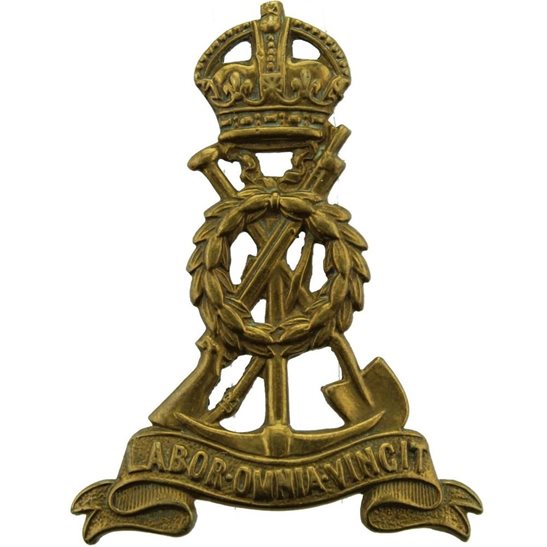Personal Details
Born: 27 July 1881 in Whitchurch, Shropshire and was baptised on 11 September the same year in Ightfield Parish Church, Shropshire.
Family: He was the second of four children born to Joseph Lees, a farmer, and his wife Mary Ann. Mary Ann died in 1890 and Joseph senior married Elizabeth Alice Garside in 1895 and together they had one child, a half sibling for Joseph junior. Joseph junior married Alice Edge on 14 January 1908 in Oldham and together they had eleven children – Annie, Harold, Fred, Alice, Joseph, Mary A, Wilfred (known as Bill), twins Ellen (known as Nell or Nellie), Albert and two who died at birth.
Residence: At the time of his baptism the family were living in Ightfield; by 1891 they had moved to Ashton Road, Oldham, Lancashire. In 1901 Joseph was serving with the Manchester Regiment and living at their barracks in Aldershot, Hampshire. By 1911, and now married, Joseph was living in Brunswick Street, Oldham. His military discharge papers show an address of 65 Webster Street, Oldham which was still his address in 1939.
Employment: He was a general labourer.
Died: In 1975 in Oldham, aged 94.
Military Details
Regiment: Labour Corps (previously King’s Liverpool Regiment and Manchester Regiment)
Rank: Sergeant
Service Number: 487241 (previously 33572 and 2108)
Date of Enlistment: 19 July 1913
Date of Discharge: 10 February 1919
Reason for Discharge: Demobilisation
Other Information: Joseph had previously served with the Manchester Regiment between 1900 and 1912, including in the Boer War. During WW1 he served in France and Egypt, suffering a gunshot wound and deafness.
William was awarded the Campaign Medals (1915 Star, British War medal and Victory medal)

The 1914 Star (also known as 'Pip') was authorised under Special Army Order no. 350 in November 1917 and by an Admiralty Fleet Order in 1918, for award to officers and men of the British and Indian Expeditionary Forces who served in France or Belgium between 5 August and midnight of 22–23 November 1914. The former date is the day after Britain's declaration of war against the Central Powers, and the closing date marks the end of the First Battle of Ypres.
The 1914–15 Star (also known as 'Pip') was instituted in December 1918 and was awarded to officers and men of British and Imperial forces who served against the Central European Powers in any theatre of the Great War between 5 August 1914 and 31 December 1915. The period of eligibility was prior to the introduction of the Military Service Act 1916, which instituted conscription in Britain.
The British War Medal (also known as 'Squeak') was a silver or bronze medal awarded to officers and men of the British and Imperial Forces who either entered a theatre of war or entered service overseas between 5th August 1914 and 11th November 1918 inclusive. This was later extended to services in Russia, Siberia and some other areas in 1919 and 1920. Approximately 6.5 million British War Medals were issued. Approximately 6.4 million of these were the silver versions of this medal. Around 110,000 of a bronze version were issued mainly to Chinese, Maltese and Indian Labour Corps. The front (obv or obverse) of the medal depicts the head of George V. The recipient's service number, rank, name and unit was impressed on the rim.
The Allied Victory Medal (also known as 'Wilfred') was issued by each of the allies. It was decided that each of the allies should each issue their own bronze victory medal with a similar design, similar equivalent wording and identical ribbon. The British medal was designed by W. McMillan. The front depicts a winged classical figure representing victory. Approximately 5.7 million victory medals were issued. Interestingly, eligibility for this medal was more restrictive and not everyone who received the British War Medal ('Squeak') also received the Victory Medal ('Wilfred'). However, in general, all recipients of 'Wilfred' also received 'Squeak' and all recipients of The 1914 Star or The 1914/1915 Star (also known as 'Pip') also received both 'Squeak' and 'Wilfred'. The recipient's service number, rank, name and unit was impressed on the rim.


He had another thre children Wilfred (Bill) Ellen(Nellie or Nell ) my mother and Albert they where twins
Many thanks for your update. We have added your new information onto our website entry for Joseph Lees
Terry Fry (Volunteer; Whitchurch Museum & Archives)
Actually there where 11 all together one was joe (Joseph) possibly other 2 died at birth?
Manu thanks for your additional information; we have updated the post for Joseph Lees.
Terry Fry
Volunteer; Whitchurch Museum & Archives